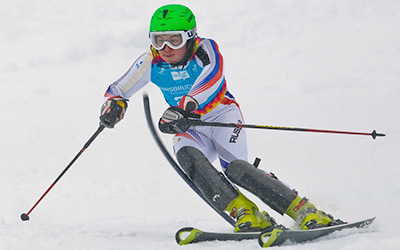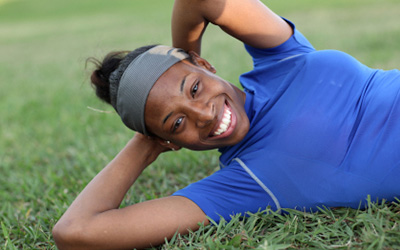



This year, top athletes will gather together in Sochi, Russia to compete in the 22nd Winter Olympic Games, and almost half of the respondents to a recent Student Health 101 survey said they’ll be watching. No matter where you live, the Olympics can inspire you to try some sports-training themed exercise.
The games may even encourage you to explore your outdoor surroundings. Laura M., a fourth-year student at Carleton University in Ottawa, Ontario, says, “I love winter sports. The Winter Olympics make me want to go outside in the snow and enjoy it.”
While the array of Winter Olympic events is diverse, there are four tenets of fitness common to the athletes’ workout regimens:
These can also support your personal fitness, regardless of your ability.
“I love watching the Olympics because the athletes really inspire me to push myself,” says Patrice V., a fifth-year student at York University in Toronto, Ontario.
The Public Health Agency of Canada suggests participating in sports as a way to be more active. However, you don’t have to be a member of a team to work out like an athlete. There are many simple ways to use Olympic events as inspiration for your own activities.

In 2010, The Nielsen Company, which keeps track of consumer information for companies all over the world, reported that skiing was the most popular sport among viewers during that year’s Winter Olympics.
Balance is essential in this sport, and you don’t need a snow-covered mountain to train like a skier. A Bosu® ball can help you improve your ability, and your agility will be strengthened by working out your core with crunches and other exercises that isolate your abdominal and back muscles. For five Bosu® exercises for increasing balancewatch the video below.Lower-body strength is needed for the tucked position in skiing and when navigating difficult terrain. This can be developed with exercises like wall sits and lunges. For wall-sit instruction watch the video below.
Wall-sit instruction. (MP4)
A trainer or athletic coach can help you set up a lower-body circuit for moving quickly from one exercise to the next. For more about circuit training watch the video below.
Circuit training. (MP4)
Many people like to watch speed- and figure skating. Figure skating requires strong, quick bursts of power for those impressive jumps and turns. Even if you’ve never set foot inside a rink, you can use plyometric exercises, which involve exerting as much force as possible in a short amount of time, to build up that kind of strength.
For example, practice jumping onto elevated surfaces, such as a sturdy box. (Your school’s gym probably has a prop designed for this.) Start from a squatting position. Pay attention to how your body moves when you jump and repeat those same motions (in reverse) as you land. This is important for decelerating your body, protecting your knees, and maintaining balance.
For more about plyometrics watch the video below.
More about plyometrics. (MP4)
In luge, the competitor lies down on a small sled, on his or her back, and races down a tight ice track.
Core strength is critical for luge, particularly for balance. It’s necessary to strengthen not only the abdominal muscles, but also the back, glutes, arms, and neck as well.
For abdominal strength-training ideas watch the video below.
According to The Nielsen Company, hockey was the most talked-about sport online during the 2010 Olympics. It requires a lot of side-to-side motion with the legs and feet.
You can imitate the motions of hockey on a smooth surface. Exercises like front, back, and side lunges-and jumping jacks-will work your lower body for the endurance necessary.
“Hockey is an intermittent sport with high intensity on the ice followed by periods of rest,” says Alexi P., a varsity hockey player at Queen’s University in Kingston, Ontario. Yanick Evola, head coach of the varsity women’s hockey team at the University of Ottawa in Ontario, explains that sprinting is also important. “Many times in a game, you need to sprint to pursue a player,” he says.
Davin S., a fourth-year student at the University of Toronto in Ontario, suggests playing broomball, which is similar to hockey but played without skates. “You’re running the length of the ice, while trying to keep your balance,” he says. Learn more about broomball.
While cheering for your favourite athletes and teams, you and your friends can create your own Olympics.
Jasmine is a fourth-year Journalism student at Carleton University.
Gather some friends and create your own Olympic games! Friendly competition can be a motivator and can make watching sports an active endeavor.
The “events” don’t need to use a lot of space, and you can come up with your own rules. For example:
Music is a great motivator, too. You can put together an Olympic playlist and share it with your “teammates!”




